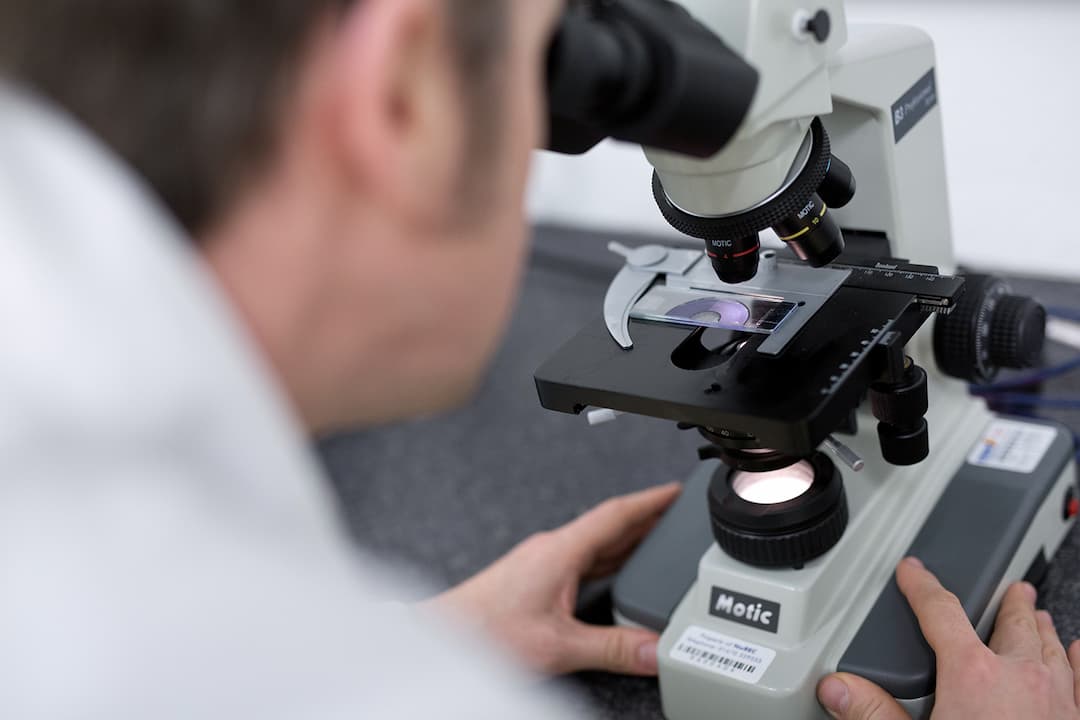Electrical infrastructure makes up almost a fifth of the lifetime cost of an offshore wind farm. This, coupled with insurance claims arising from cable failures, makes electrical systems and associated materials a key area for technology research and innovation to drive down the cost of energy.
Highly-Accelerated Lifetime Testing
For the next generation of offshore wind farms to keep generating electricity across their expected 25-40 year lifespan, the cables that connect the turbines and substations must withstand the extreme loads and harsh conditions experienced in deep water far offshore.
ORE Catapult partners with key sector players to understand their future HV insulation materials testing needs. And as part of a continued programme of investment to keep our assets at the forefront of industry requirements, our Materials Laboratory has recently been refurbished and enhanced with a cutting-edge suite of systems, helping our scientists carry out atomic-level characterisation and forensic analysis on the materials that make up offshore power systems.
To ensure that newly-developed cables can survive their expected lifespan, they must undergo a programme of highly-accelerated lifetime testing (HALT).
All wet and semi-wet subsea cables have an outer layer that insulates the high-voltage power core from the surrounding earth conductor and contains a cross-linked polyethylene polymer that slows water ingress and prevents water tree development.
Water tree development occurs when the insulation layer’s water content exceeds a certain level – generally around 70%. They might be only microns wide, but water trees are a sign of insulation ageing and can lead to cable breakdown. The cost of repairing subsea cable can reach £2-5 million per km, so a fault, such as a cable short-circuit, could prove costly for developers.
Water trees are now not a common cause of in-field cable failure, but understanding the ageing mechanisms within the insulation system is key to ensuring insulation quality, and in doing so to preventing water trees from leading to future cable failures – specifically with insulation systems that are being designed to operate under increasing electrical stresses. Water tree characterisation provides an understanding of the condition of the aged insulation and helps confirm that the insulating layer is high-quality, keeping down the lifetime costs of offshore wind farms.
Our HV Laboratory is the only open-source, UKAS-accredited facility in the UK providing the capability to carry out the full ageing and materials analysis workflow in one facility.
Materials Analysis
Our HV Laboratory is the only open-source, UKAS-accredited facility in the UK providing the capability to carry out the full ageing and materials analysis workflow in one facility.
Our team of highly-experienced scientists are experts in the forensic analysis of materials, with the capabilities to analyse how a breakdown occurs, and take in the wider set of circumstances leading to cable failure. We also have the capability to perform research into new cable materials – from basic analytical research through to new product developments in water-retardant insulation, self-repairing materials and beyond.
The laboratory’s cutting-edge spectroscopic and microscopic suite also includes facilities for hot set testing: one of the materials tests required to prove that the cable’s insulating layer and its factory joints conform to international standards. These vital tests determine whether insulation material has been properly cross-linked, providing a useful quality check on the cable’s production process.
We’re trusted by large-scale, multi-national utilities and smaller companies alike to provide materials assessment for projects ranging from kW to multi-MW-level in scope. That versatility, combined with an unrivalled depth of expertise and experience and our open-source nature, is why the world’s leading cable manufacturers choose us to test, demonstrate and validate their new products.
Case Study
During the design and development of its pioneering 66kV subsea cable system, JDR commissioned ORE Catapult’s Materials Laboratory to carry out a programme of highly-accelerated life testing, followed by a thorough package of tests that included detailed analysis of the new cable’s insulation layer. During and after the wet age testing, performed with full-scale 66kV cables in saline water to better represent conditions offshore, we used Karl Fischer Titration to analyse the amount of water absorbed by the compound. These tests must be undertaken within 15 minutes of the cable being cut after it leaves the water in the ageing tank. Having the electrical and materials laboratories under one roof, then, provides a unique facility for this particular work.
